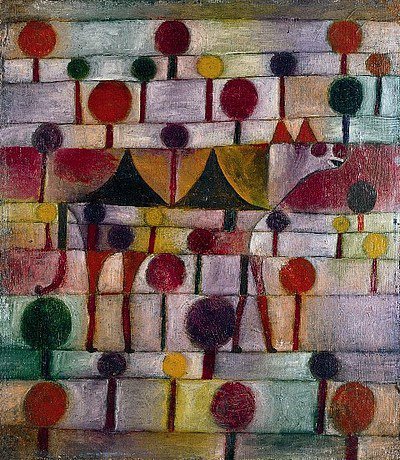100 x Paul Klee
dal 27/9/2012 al 9/2/2013
Segnalato da
27/9/2012
100 x Paul Klee
K21 Kunstsammlung, Dusseldorf
Paintings and their Stories. The focus of the exhibition is not exclusively on Klee's creative achievement, but on the historical vicissitudes of these works of art as well. Klee began teaching at the Dusseldorf Art Academy in the early 1930s, and immigrated to Switzerland in late 1933 under pressure from the National Socialist dictatorship.

curated by Anette Kruszynski
The purchase in 1960 of 88 works by Paul Klee (1879 - 1940) by the Federal State of North Rhine-Westphalia furnished the impetus for founding the Kunstsammlung Nordrhein-Westfalen in Düsseldorf. Today, the Klee collection – which has grown to include 100 works – is one of the most comprehensive by this artist in Germany, and the focus of international attention. Now for the first time, all of these works will be presented to the public together at K21. The focus of the exhibition is not exclusively on Klee’s creative achievement, but on the historical vicissitudes of these works of art as well. Klee began teaching at the Düsseldorf Art Academy in the early 1930s, and immigrated to Switzerland in late 1933 under pressure from the National Socialist dictatorship.
These paintings, drawings, and watercolors offer invaluable insights into the oeuvre of this remarkably multifaceted artist while providing a wide-ranging overview of Klee’s virtually inexhaustible creativity. Featured alongside works dating from the turn of the 20th century and documenting his earliest beginnings as a graphic artist are those which reflect his experiences during the legendary trip to Tunisia in 1914. Precisely composed paintings dating from 1919 represent Klee’s adoption of oil painting; the geometric-constructivist works were produced in connection with his teaching activities at the Bauhaus in Weimar and Dessau. Drawings and oil paintings from the late periodic, finally, feature a cryptic, symbol-laden idiom. Klee also reflected with sensitivity and a razorsharp perspective on the events of his time, at the same time generating an artistic cosmos which synthesizes tragicomedy and irony, lightheartedness and gravity, playfulness and calculation.
The exhibition also fosters an understanding of Klee’s creative process through an examination of the fronts and backs of individual works: Klee accorded great importance to the materials he utilized, through which he aimed at very specific effects. He gave his works special frames, thereby making it clear that he regarded them as objects. Also receiving attention is the collector through whose hands the greater part of the works in the Düsseldorf Klee Collection passed. Up until the late 1950s, the US-American industrialist G. David Thompson assembled the collection before deciding – astonishingly – to part with all of the works. Another focus of the presentation is on the art dealers who were involved with the works in the Düsseldorf Klee Collection, some formerly owned by prominent personalities. Labels on the backs of some paintings supply information about international exhibitions at which works from the Düsseldorf Klee Collection were on view. They also tell of the "diplomatic mission" fulfilled by the collection in a number of different countries since the mid-1960s.
K21 Kunstsammlung
Standehausstrasse 1 - Dusseldorf



